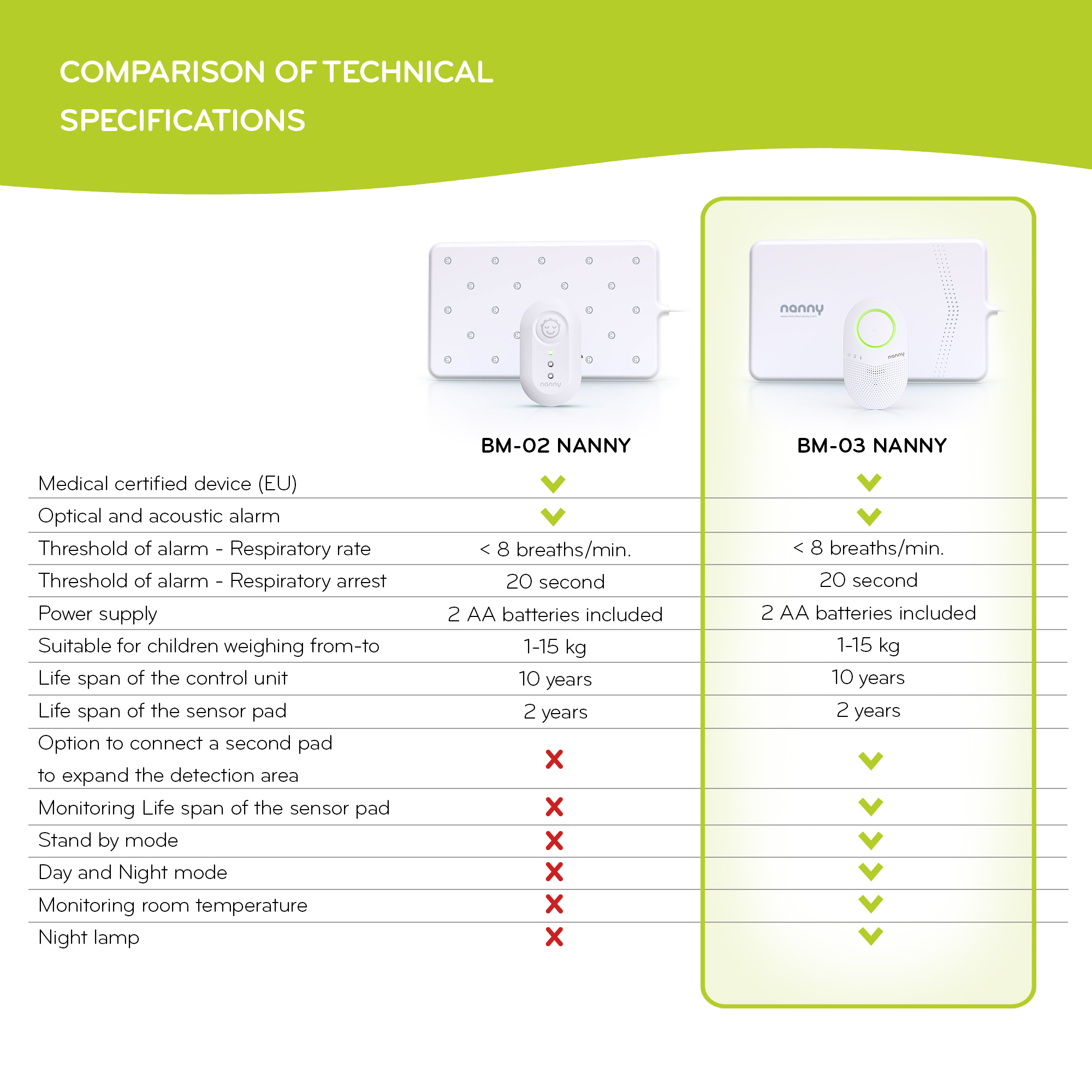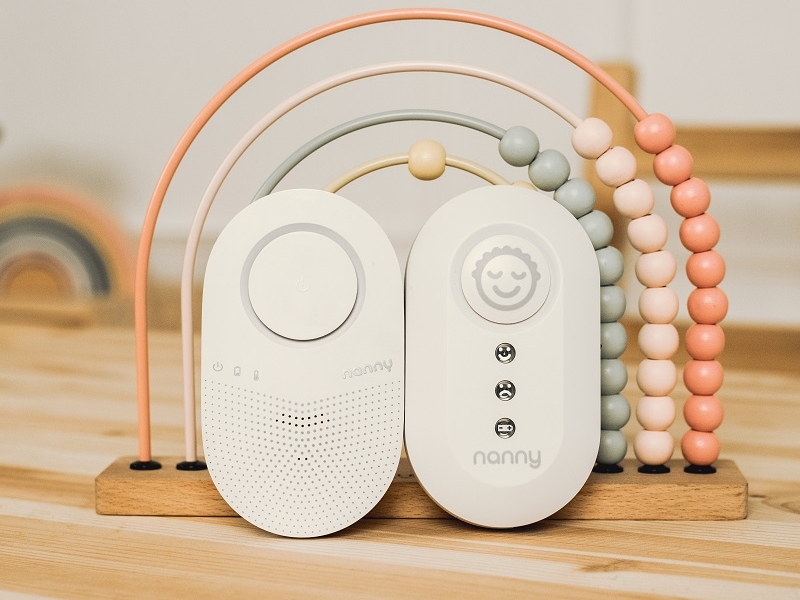BM-02 Nanny has looked after hundreds of thousands of children. After years, it finally got its sibling, which is a few features smarter - BM-03. This does not mean, however, that the BM-02 has to be abandoned. The older sibling is already a hit and has proven itself on the market, so it would be a shame to get rid of it. This article will show you how the younger BM-03 differs.
The Nanny is a certified breath monitor designed for use in healthcare facilities as well as in the home. It warns in the event of respiratory arrest, which can occur in babies due to gagging or SIDS (Sudden Infant Death Syndrome). It also alerts you to a drop in breathing rate by flashing and making a loud sound.
The breathing monitor consists of an electronic evaluation unit and a sensing pad with a sensitive sensor, which is placed under the mattress of the cot. Both types of breath monitors fulfil this function. In the video you can see with what care each and every breath monitor is made.
For baby's safety, you now have a choice. Czech company Jablotron launches another model of the popular Nanny breathing monitor. The new Nanny BM-03 builds on the reliability of the BM-02 and offers several extra features. For a better idea, we will use the analogy of mobile phones to illustrate the difference.
Different versions of mobile phones are available on the market. Basically, they are of the same quality, you can definitely make calls and send text messages with them. But then they have some extra features. So it's up to your needs whether you want to use these features or just the basics. So that's exactly the difference between the Nanny BM-02 and BM-03.
They both reliably monitor your baby's sleep. However, the BM-03 moves with the times and brings several features that enhance the comfort of use. We will now introduce them individually.
Warning when you forget to turn on the monitor
The BM-03 also thinks about moments when parents accidentally forget to activate the device. If you place your baby in the crib and the monitor isn’t turned on, the orange indicator light will start flashing, and after half a minute, two long beeps will sound. This alerts you that the device is detecting movement on the pad, but to switch it to active mode, you need to press the mechanical button.
The baby placement detection function is enabled by default, but you can turn it off or back on at any time by holding the button while inserting the batteries. If the function is turned off, the monitor will notify you after the automatic test with two beeps.
The Night lamp
A practical new feature of the BM-03 is the integrated nightlight, which illuminates the front panel of the unit for 30 seconds, so you don't have to use another light source in the room to operate the baby. If you press the lamp button again within 20 seconds, you can extend the light time. You do not need to light anything in the room, if you do not press the button, the light intensity will gradually decrease.
Room temperature monitoring
A significant innovation is the integrated temperature sensor in the evaluation unit. Overheating of the room is one of the risk factors for SIDS. The sensor operates within a comfort zone of 16.5 °C to 28 °C and flashes a light if the temperature deviates below/above these values. If the temperature is lower, the sensor flashes blue. If the temperature exceeds the limit, the indicator flashes orange. At that point, you should lower the room temperature to prevent the baby from overheating.
Day and night mode
The new Nanny BM-03 automatically recognises day or night and adjusts the intensity of the signal LEDs to suit. They will light up at night with less intensity than during the day. This will especially please those of you who are sensitive to any light during sleep.
Extension of the detection area
Two pads can be connected to one BM-03 monitor. The pad can be purchased separately as a spare part under the BM-03D designation, or in a convenient set. Up to about 6 months of age, it is sufficient to use one sensor pad. As soon as the baby starts to move, a second one can be added to the crib and connected to the same evaluation unit. The latter contains two sockets for connecting the pad. It does not matter in which order you connect the pads. The sockets are the same.
Before it is the turn of the second pad, it can be left in the second cot at home or with another caregiver and travel with only the control unit. This saves space in your luggage and you don't have to worry about forgetting the pad.
Please note, if you have twins, each child needs its own evaluation unit. You cannot connect two pads in different cots to one unit!
Monitoring life span of the sensor pad
Also new is a feature that keeps track of the number of hours the monitor has been in use as an auxiliary reading. If the pad is likely to have exceeded the specified time of use, a warning beep sounds 3 times during each self-test, which is triggered whenever the unit is switched on. The shelf life is 2 years. The date the pad was put into service is important for determining the expiry date. This is because the sensor in the pad may wear out over time and lose sensitivity. There is a risk of it reporting false alarms. That would not give you much peace of mind.
Which one to get?
Can't decide which one is right for you? Both breath monitors are made with the utmost care. The Nanny BM-02 is for those who like proven stuff and are happy with the basic functions of the device. The Nanny BM-03 will appeal to those who like designer products, various technical gadgets and are happy to pay extra for a variety of extra features.

